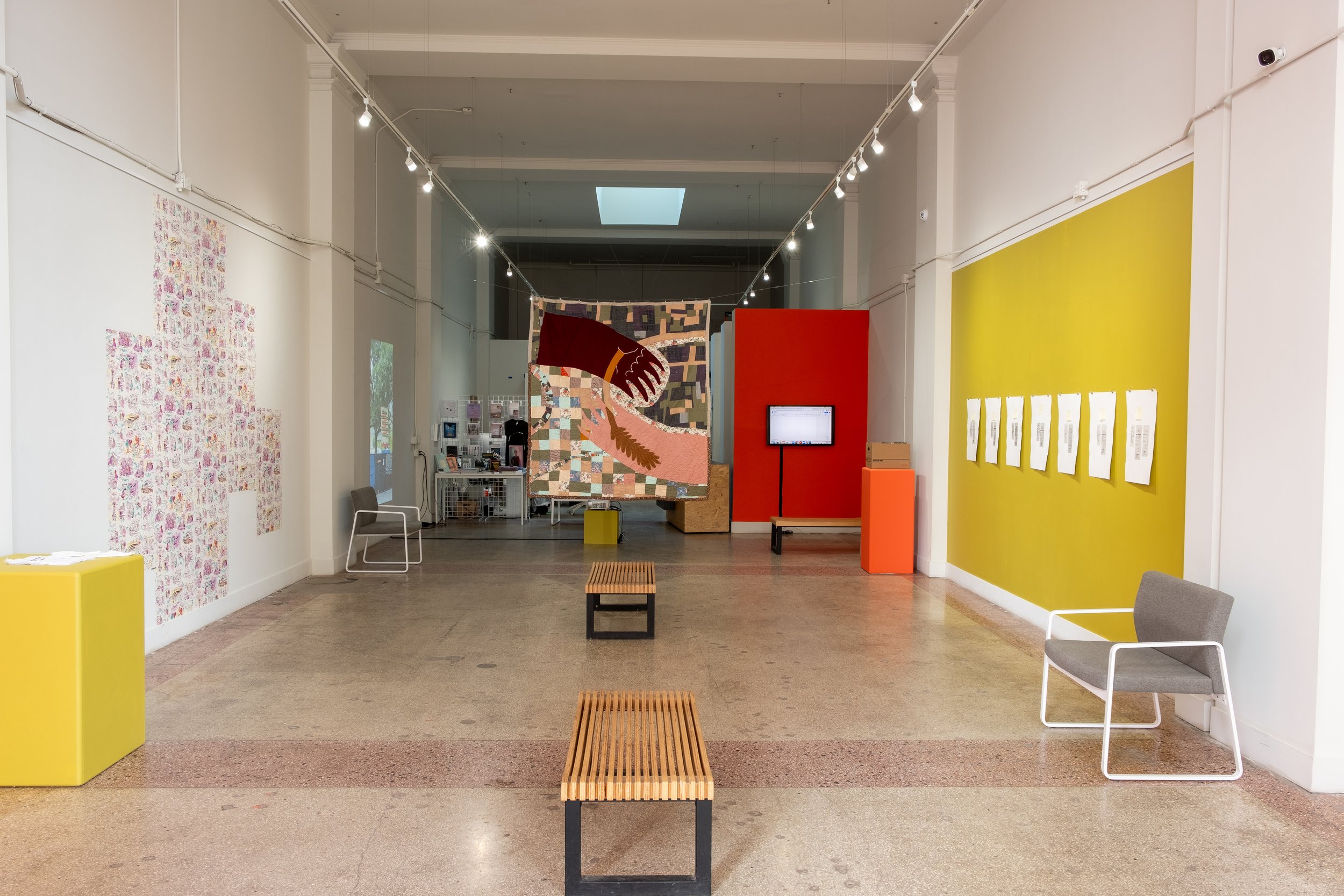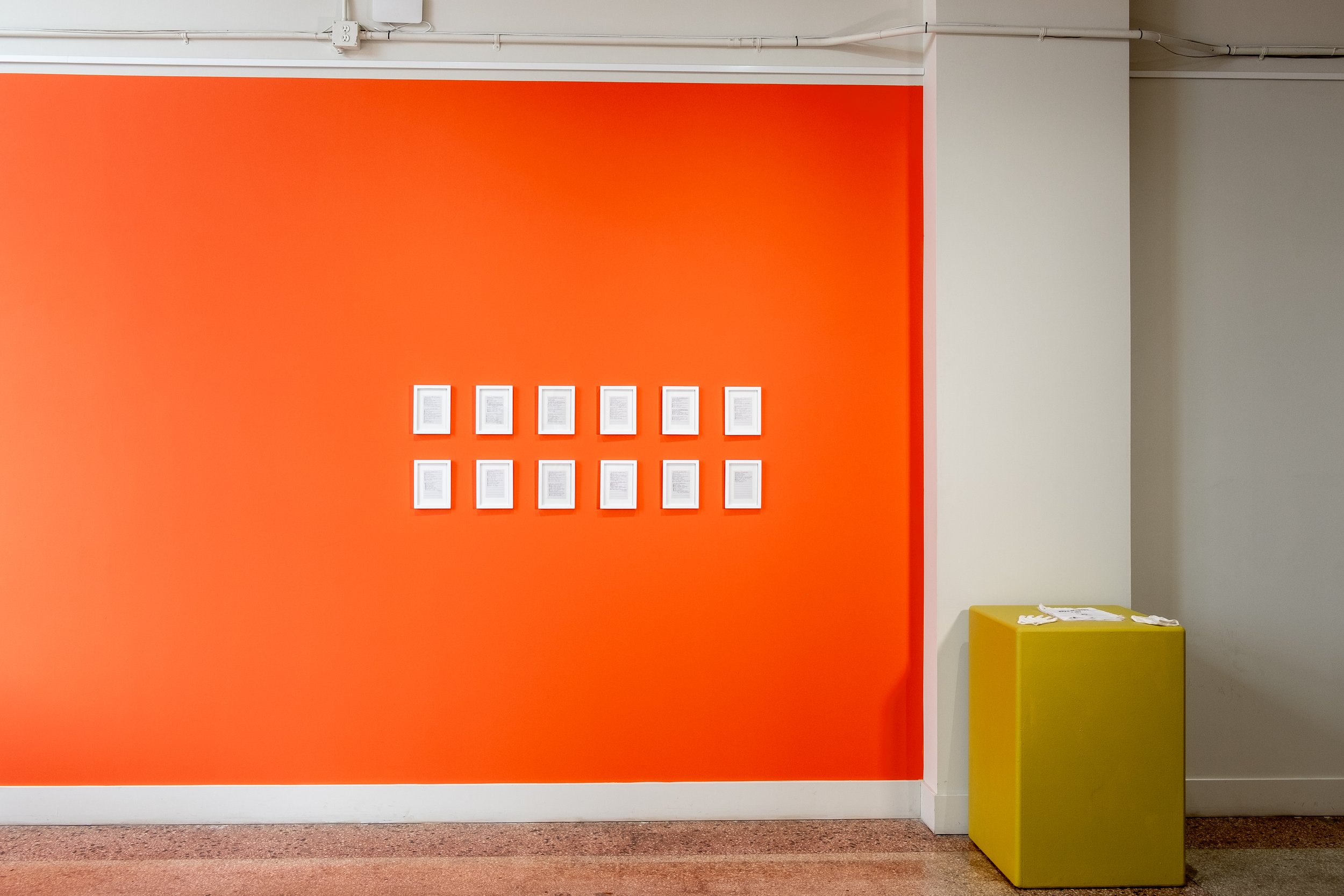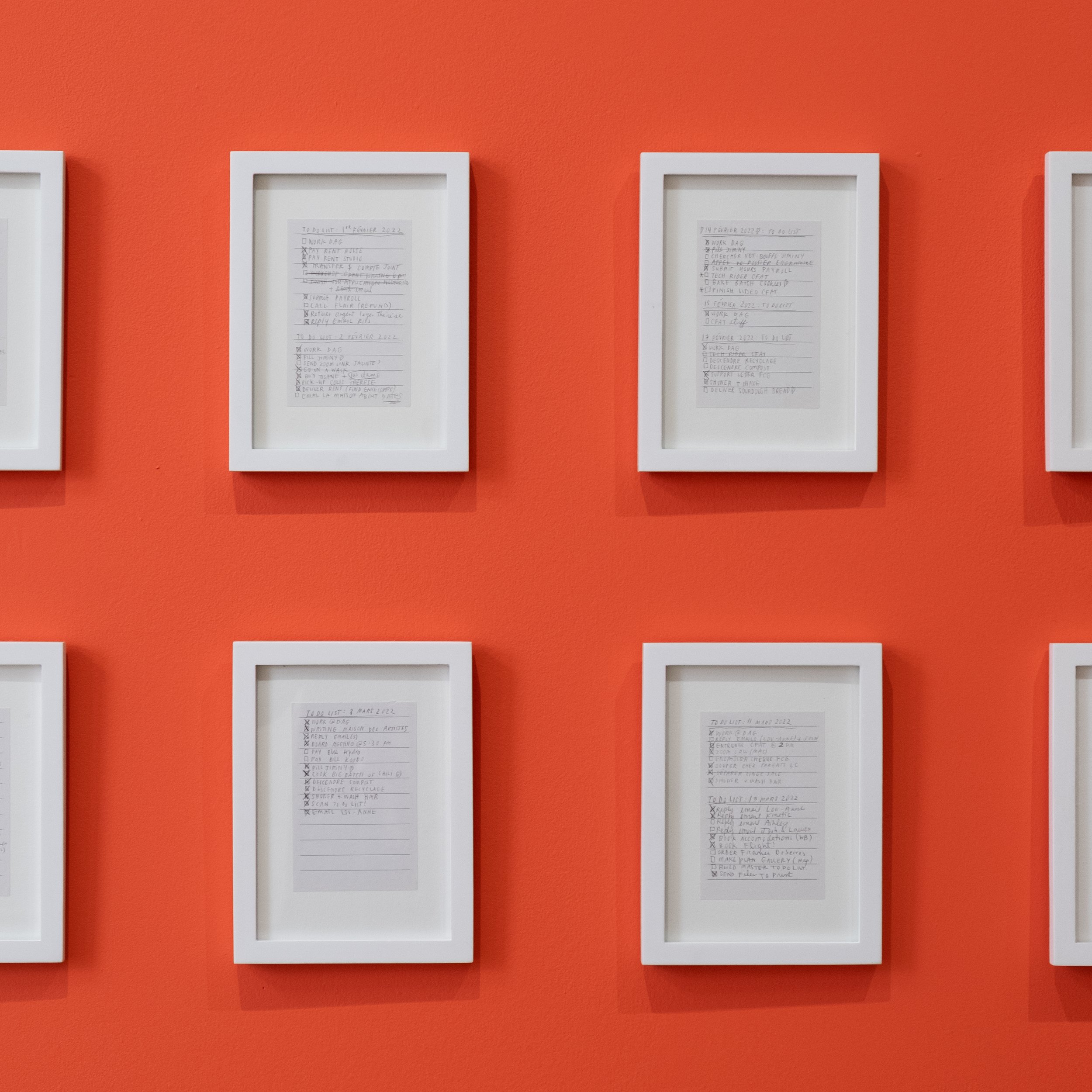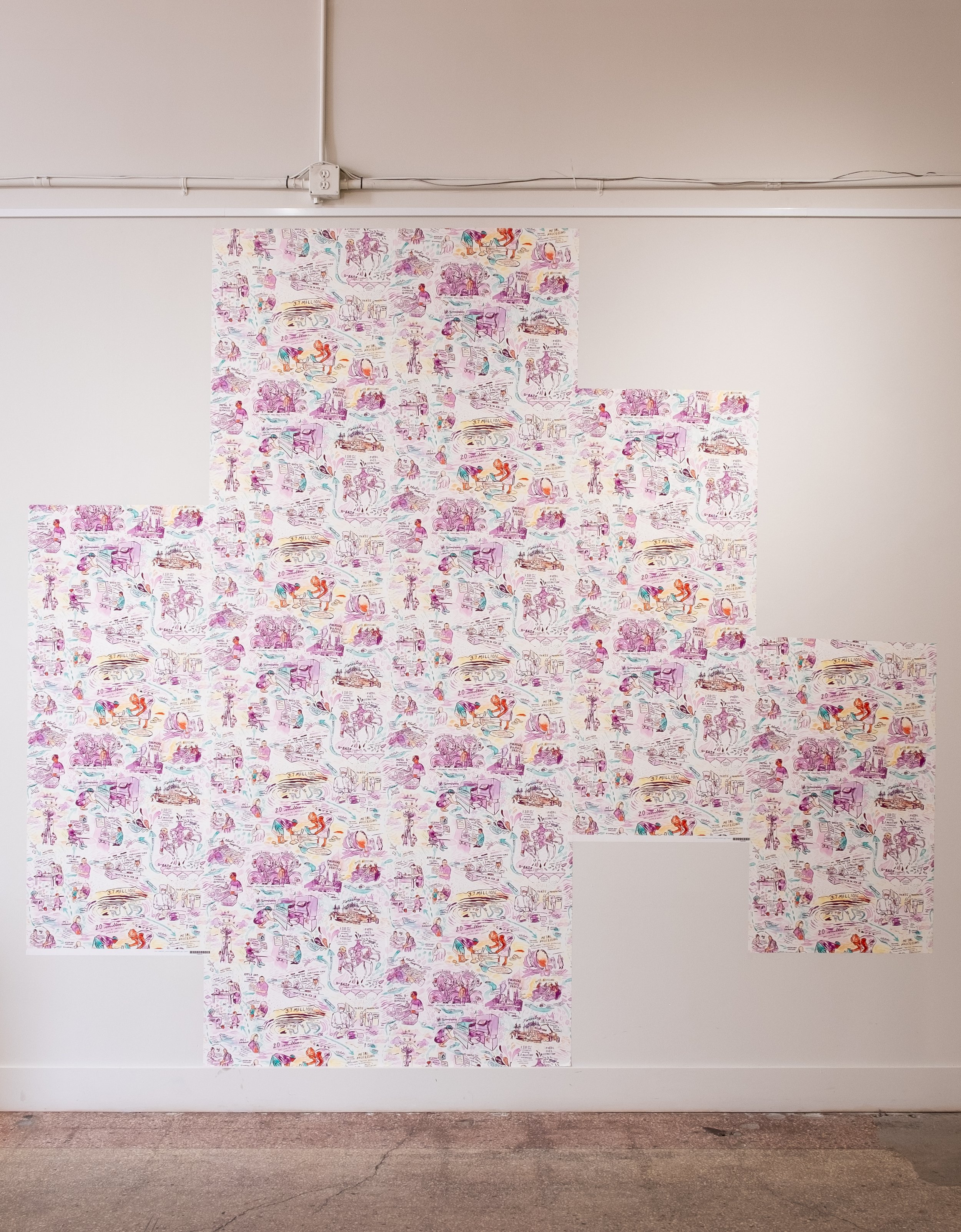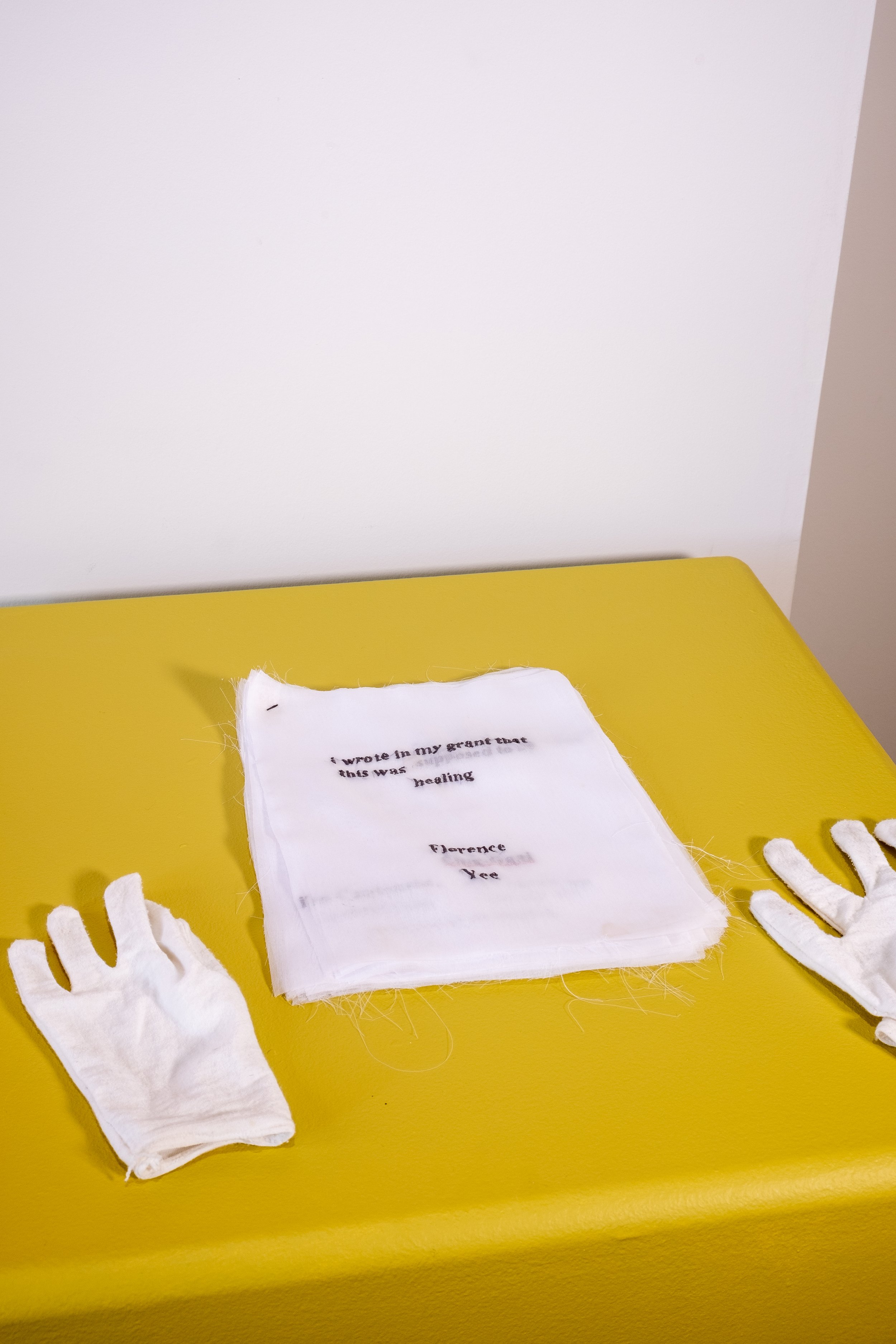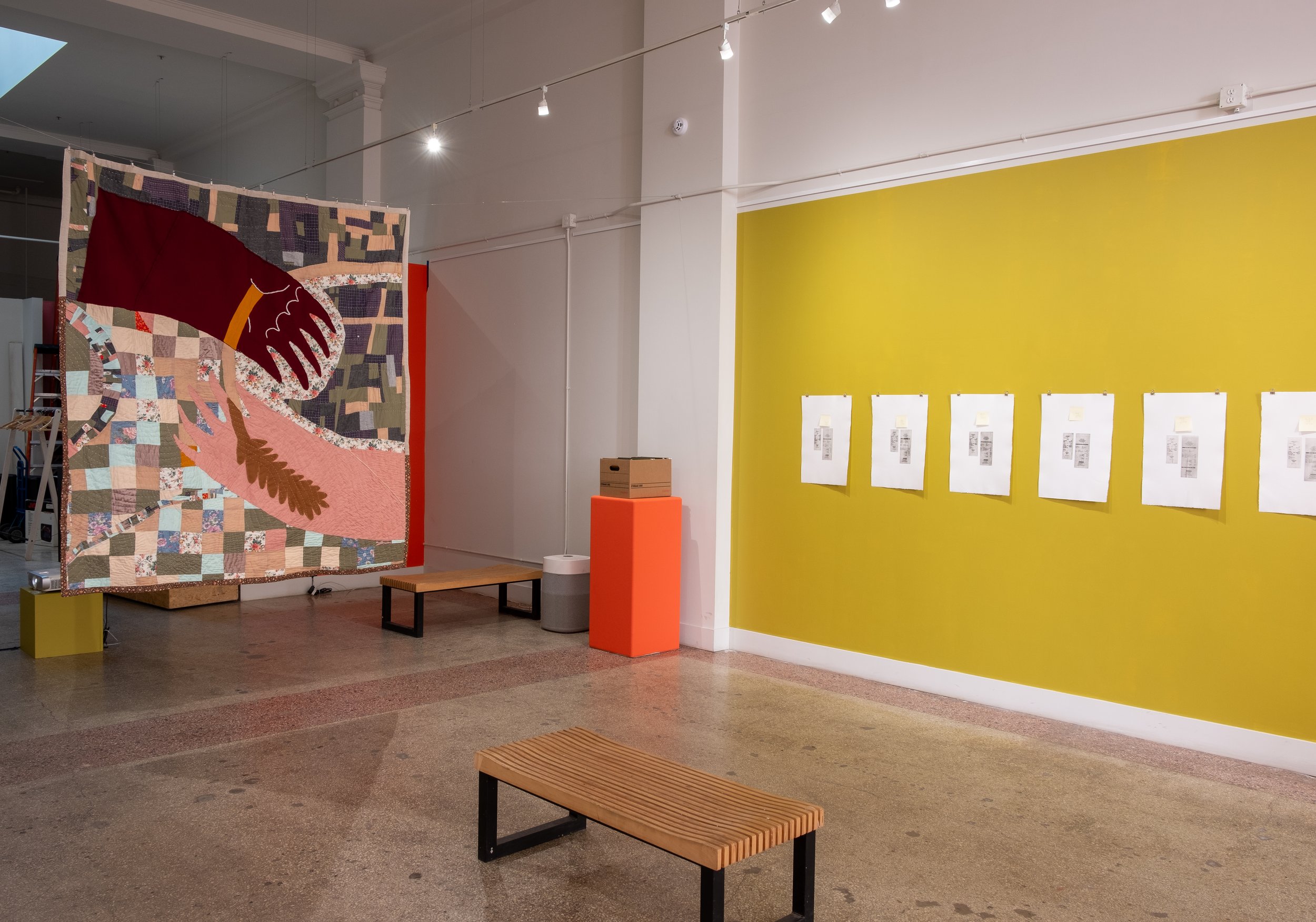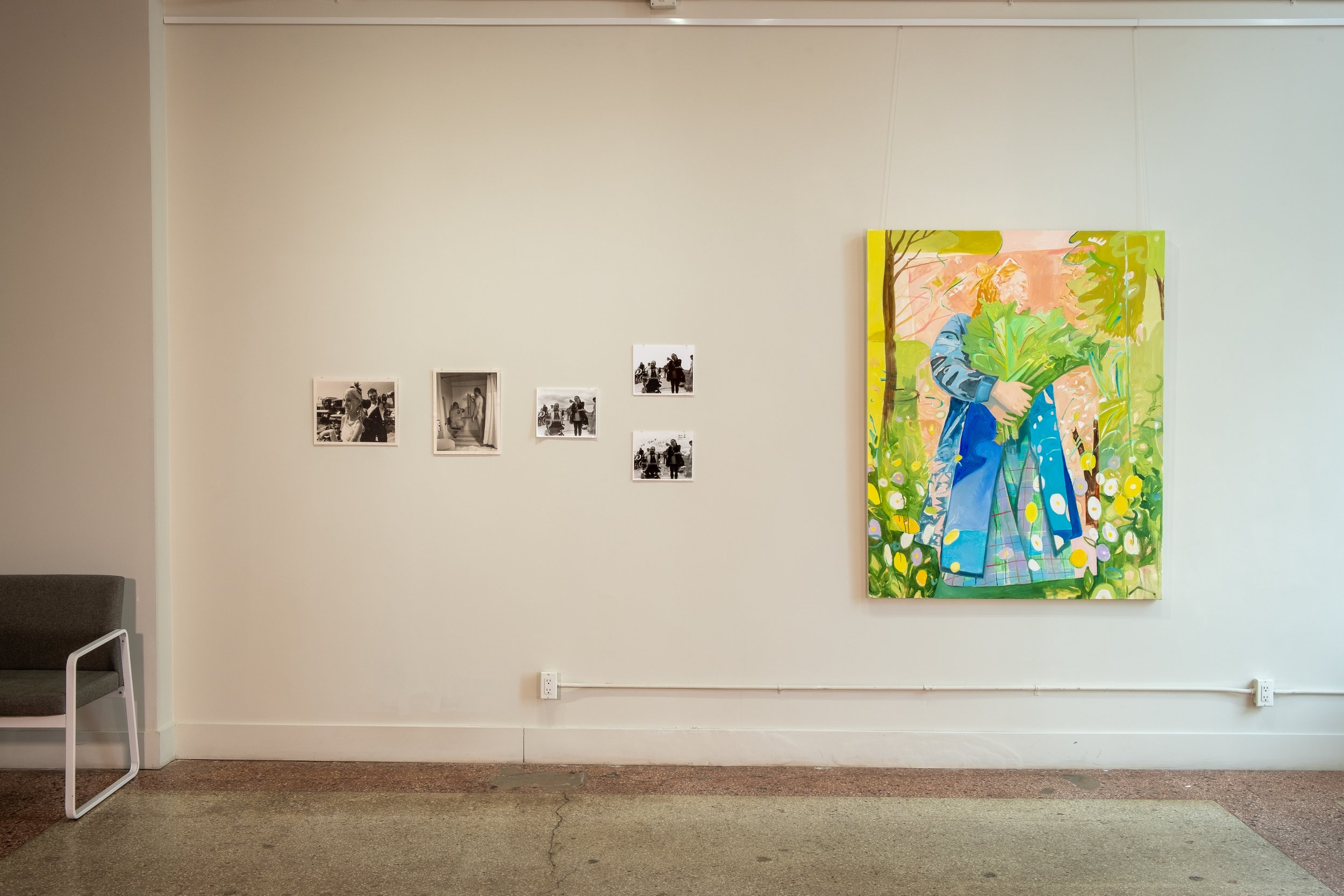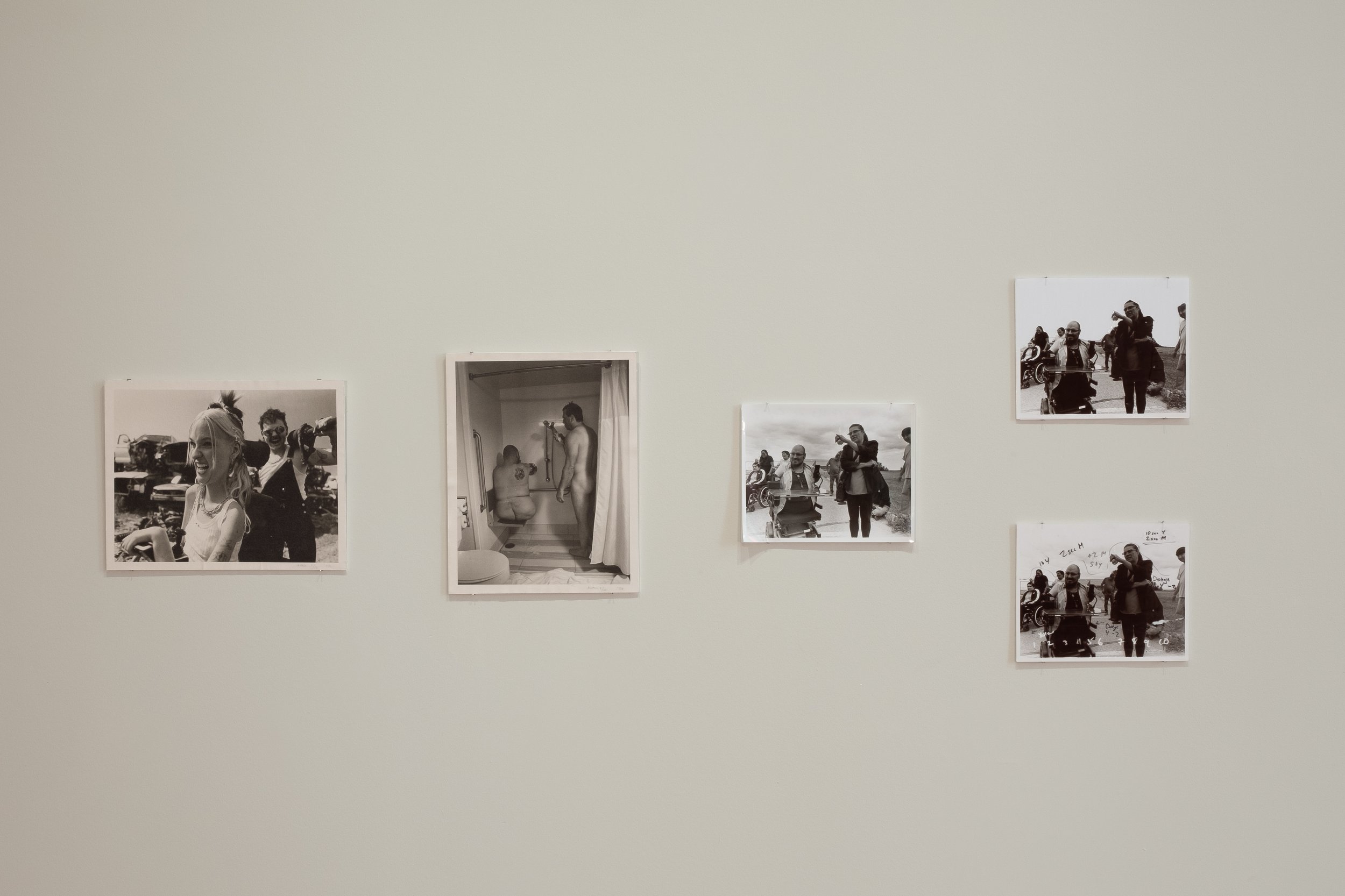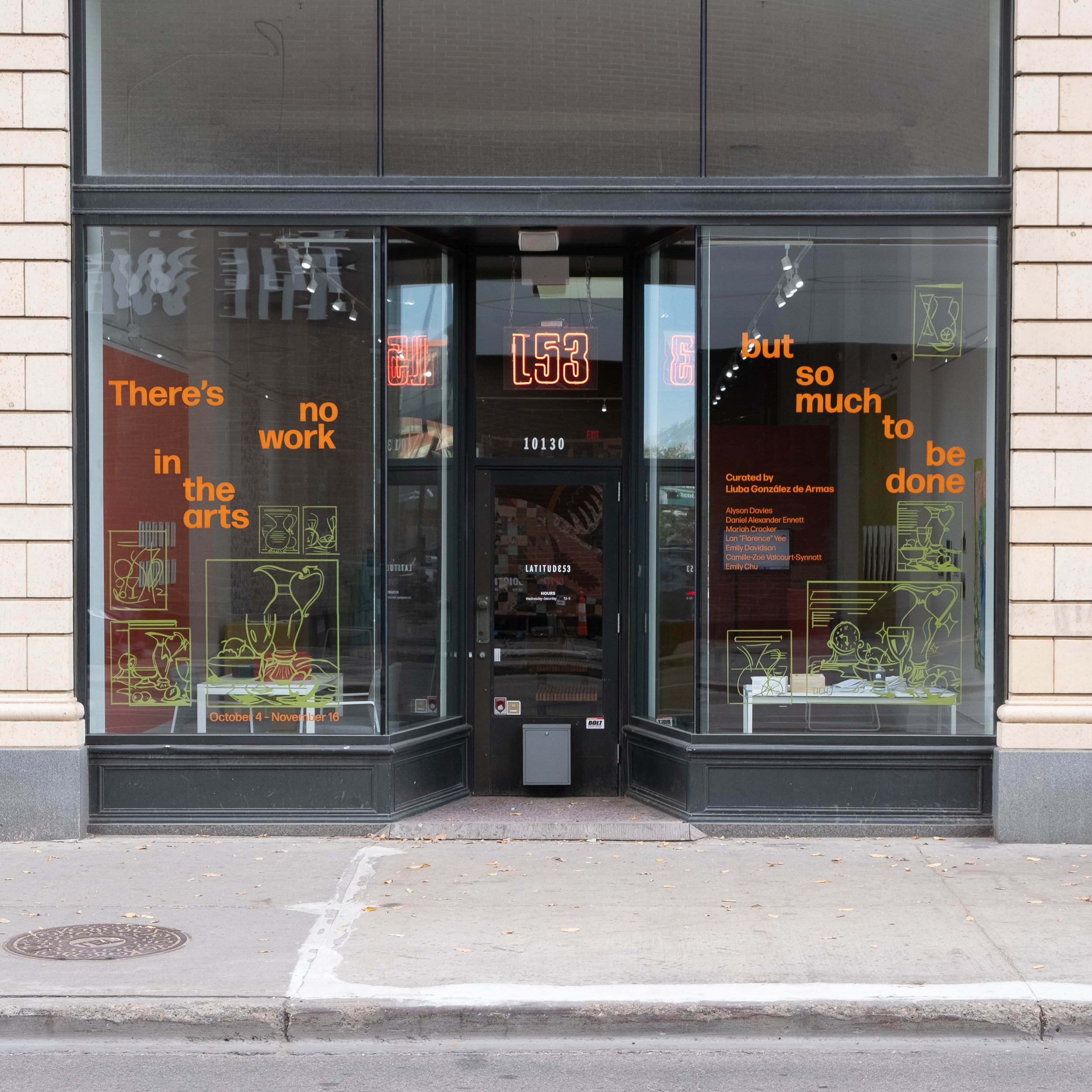There’s no work in the arts, but so much to be done.
Curated by Liuba González de Armas
Oct 4–NoV 16, 2024
Image credit: Emily Chu, Designer- Illustrator
Upcoming Events:
Opening Reception Friday, Oct 4th, 7-9 PM
Live Beadwork Performance with Moriah Crocker | Oct 9,10,12,26, Nov 2
CARFAC-AB x Latitude 53: How do we create a healthy art ecology? | Oct 25
The Potential of Invitations (and when you should just say no) with Christina Battle | Nov 2
FEATURED ARTISTS
Moriah Crocker
Emily Davidson
Alyson Davies
Are you artists or cops (Daniel Ennett & CO)
Camille-Zoé Valcourt-Synnott
Lan “Florence” Yee
Emily Chu (designer - illustrator)
Curatorial Statement
According to the 2021 census, there were 42,685 Albertans employed in arts, entertainment and recreation. In 2023, the visual and applied arts and live performance industries contributed about $1.58 billion in GDP in Alberta, and had the largest sector increase (7.1%) in GDP compared to 2022. However, artists' median income ($28,500) is 51% lower than that of all Alberta workers ($52,400) and artists with undergraduate degrees earn about 55% less ($30,300) than workers with the same level of education ($66,500).
The image of the artist as an independent creative worker in the studio no longer holds. Artists’ working conditions more closely resemble those of gig workers: short-term contract work offering no paid time off, workers’ compensation, pension plan, or health or dental insurance. Canada’s public funding model for visual artists, which relies on one-time project creation and presentation grants, does little to remedy these conditions of precarity and uncertainty. Artists face lengthy bureaucratic application processes, competing against hundreds of peers for limited resources and with no guarantee that their work will be remunerated. Within this model, artists must assume a myriad of administrative roles – as accountant, grant writer, project manager, publicist, etc… – in order to secure the resources to sustain their practice. If a thriving arts sector is, as research consistently suggests, in the public interest, who benefits from this state of affairs? We know who suffers: arts workers do.
While artwork epitomises the labour of the artist, the vast majority of artists’ work goes unseen and unpaid. This exhibition aims to render visible the work that artists (and other workers) do in order to produce artworks and sustain artistic practices. The artworks on display render visible the material costs, time, and (at times emotional) labour required to produce artworks. These works situate artists as workers and within networks of skilled workers in order to articulate common struggles and interests, both historically and contemporary. Many of the featured artists support themselves and their practices through other formal and informal labour, including research, teaching, design, and administrative and care work.
In the spirit of transparency, Latitude 53 staff and exhibition contributors have consented to keep the gallery open to the public during installation Oct 1-4 and to make publicly accessible key documents related to the production of this exhibition, including the exhibition budget and curator, artist, and presenter contracts.
About the Artists
Moriah Crocker (she/her/wiya) is a Métis beadworker and researcher from amiskwacîwâskihikan. She began beading in 2020 for family and friends. In 2022, she graduated from the University of Alberta with a Bachelor of Arts. She is currently pursuing a Masters of Art in History of Art, Design, and Visual Culture. Her research-creation Master’s thesis is focused on the labour of Indigenous beadwork and is SSHRC funded. She lives in amiskwacîwâskihikan.
Emily Davidson is a white settler artist, activist and graphic designer based in Kjipuktuk (Halifax, Nova Scotia). Her artistic practice uses printmaking as an entry point to investigate histories, imagine new futures, and agitate for social justice causes. Her current research / creation focuses on the entangled relationship of print media in historic and ongoing colonization of Indigenous lands across Turtle Island and interrogates and the role printers played in Transatlantic Slavery in the territories that became Canada. Emily graduated from NSCAD University in 2009 (BFA, Interdisciplinary) and 2023 (MFA). Emily is a Research Assistant at Slavery North, UMass Amherst. Emily is President of the Turret Arts Space, and long-time advocate for building arts space in Kjipuktuk.
Alyson Davies is a visual artist based in Edmonton, Alberta. She earned her Master of Fine Arts in Studio Art from Emily Carr University of Art and Design in Vancouver, and her Bachelor of Fine Arts in Art and Design from the University of Alberta. Davies’ recent Edmonton based solo exhibitions include "Flower of the Fern" at Studio Hager (2024), "Seedlings" at Miller Gallery (2023), and "Imagining the Heartland" at Studio Hager (2022). Her work will be featured in forthcoming group exhibitions at the Art Gallery of Alberta and DHART Space in 2025 and 2024, respectively. She has contributed to public art projects like "Blue Earth Tarot" for the Capture Photography Festival at Lafarge Lake - Douglas Skytrain Station in Coquitlam, BC (2023) and murals for Salem Art Works in New York (2018) and Arts Hab in Edmonton (2016). She participated in the Canadian Wilderness Artist Residency on the Yukon River (2018), Salem Art Works in New York (2018), Elsewhere Studios Residency in Colorado (2015 & 2017) and at ArtsHab’s Mcluhan House (2016-2017). Davies' work has been featured in various media outlets, such as CBC Arts, Chatelaine Magazine, Geist Magazine, and Canadian Art Magazine. In her spare time, Davies enjoys being with nature through gardening, smelling tomatoes, hiking, canoeing, and rock climbing.
Are you artists or cops? (Daniel Ennett & co)
Daniel Ennett is an artist, filmmaker, and advocate from Amiskwacîwâskahikan/Edmonton. He holds a first-class BA Honours in Psychology from the University of Alberta and has been working in film for over a decade. Daniel hosted three seasons of the web-series 'Invincible' and the short film 'Beneath the Surface'; both projects followed his adventures as an above-elbow/knee quadruple amputee where he tried various adaptive sports like skiing, skydiving, and scuba diving with sharks. He worked as an artist/producer on a 35mm minute-long art film, Form and Function. Daniel has an art film, “Flesh Ballet” in development: a visual commentary on ableism. He also has a docu-series in development with Accessible Media Inc, “The Crip Trip”, a punk rock buddy road trip on the intricacies of care work, where he talks with other disabled artists about the archaic systemic structures Disabled people have to interact with. He just finished directing seasons 1 and 2 of "PUSH" for CBC, a series that follows a cast of Disabled participants in Edmonton, as well as "Pain and Offering", a short online series for TELUS that explores chronic illness and the arts in a Western Canadian context. Daniel maintains a thriving painting and photography practice focusing on figuration and bringing light to Disabled experiences.
Camille -Zoé Valcourt-Synnott (she/her) is a multidisciplinary visual artist and arts worker from Quebec (QC). She graduated with a BFA (Print Media) from Concordia University in 2018 and an MFA from NSCAD University in 2020. Her performances reflect on the value of the artist’s work, perceptions of productivity and where life and art meet. Referencing everyday tasks, (un)remunerated work and invisible labor, her practice points to the flaws already present within the arts but that are, too often, not acknowledged. She is interested in the intersections between labor, gender and class dynamics, and how they all play a part in making certain audiences feel welcome in different art spaces. Her performances and text-based works have been shown in artist-run centers and galleries across Canada.
Lan “Florence” Yee is a visual artist and cultural worker based in Tkaronto/Toronto & Tiohtià:ke/Mooniyang/Montreal. They collect text in underappreciated places and ferment it until it is too suspicious to ignore. Lan’s work has been exhibited at the Textile Museum of Canada (2023-24), Darling Foundry (2022), the Toronto Museum of Contemporary Art (2021), and the Gardiner Museum (2019), among others. They obtained a BFA from Concordia University and an MFA from OCAD U as a Joseph-Armand Bombardier SSHRC scholar. They are a recipient of the William and Meredith Saunderson Prizes for Emerging Artists (2023). Lan is a member of JIA Foundation as curator of the Chinatown House MTL.
CURATOR
Liuba González de Armas (b. 1994) is an arts worker and early career curator with roots in Ciudad Nuclear and Amiskwaciwâskahikan/Edmonton. She holds a Master’s in Art History from McGill University (2020) and a Bachelor of Arts from the University of Alberta (2018). Her previous funded exhibitions include Tropical Gothic (with Excel Garay, Khyber Centre for the Arts, 2023), Tactics for Staying Home in Uncertain Times (MSVU Art Gallery, 2021), and Escape / The Great Indoors (Hermes Gallery, 2021). Together with Ana Ruiz Aguirre, she co-edited Beyond the Gallery: An Anthology of Visual Encounters for Edmonton’s Laberinto Press in 2021. Liuba currently serves on the Board of Directors at Eyelevel Gallery in Kjipuktuk/Halifax.
Photo Credit: Véronica Gutierrez
